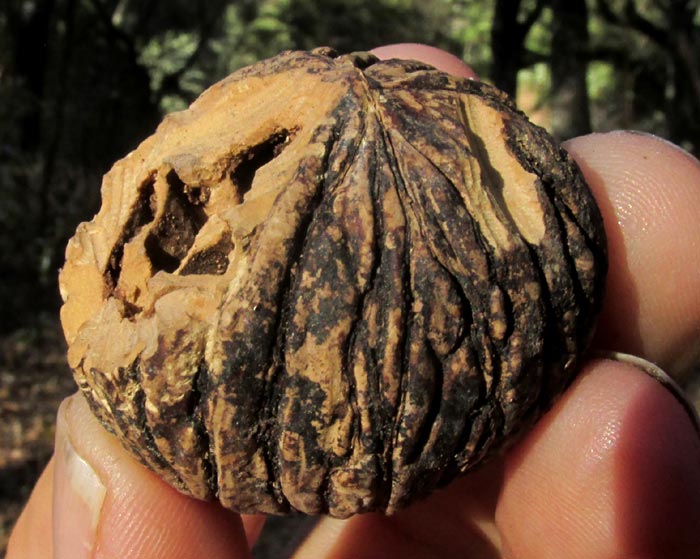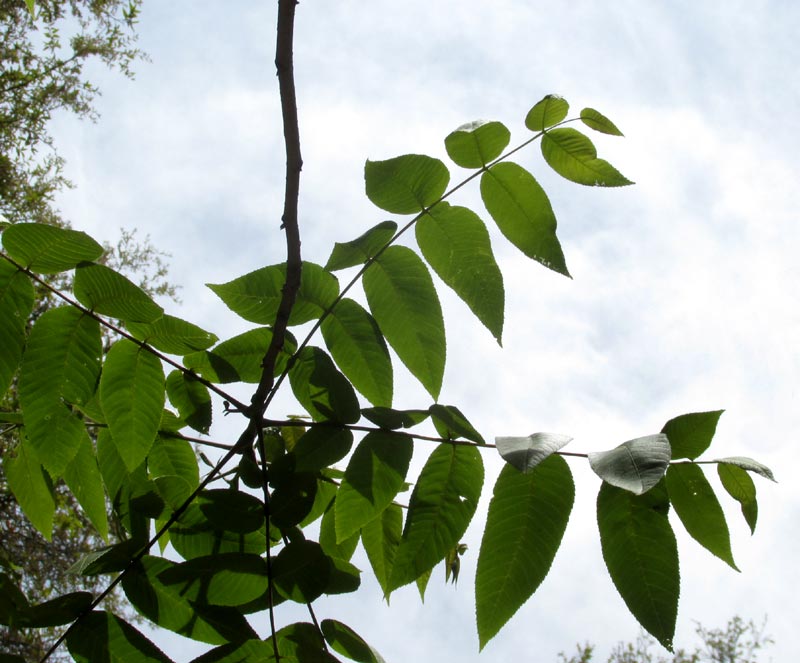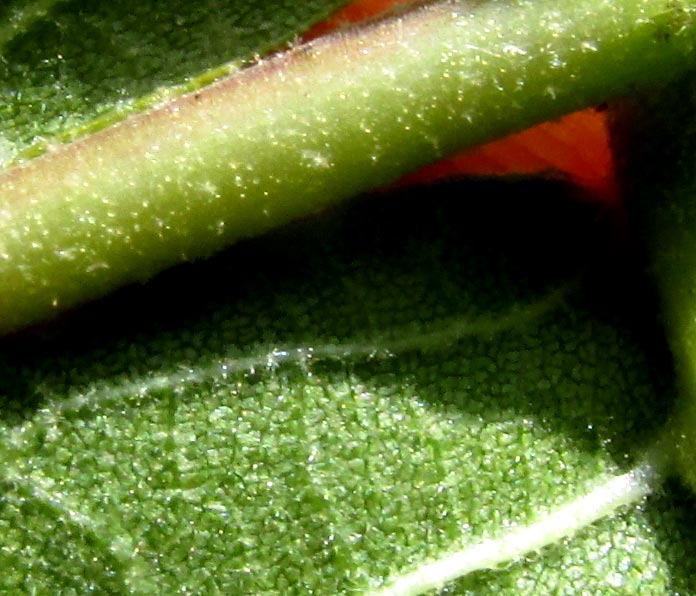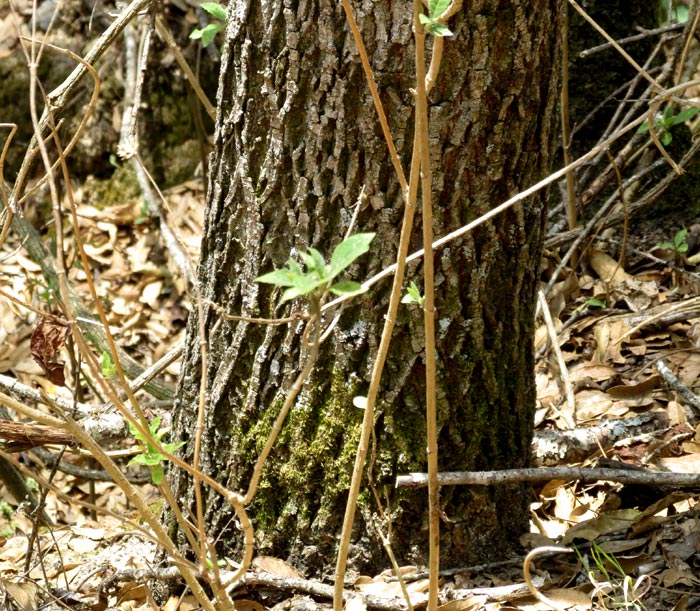Excerpts from Jim Conrad's
Naturalist Newsletter
entry from field notes dated April 15, 2022, taken in disturbed/reforesting borderline cloudforest within 1km of Valle de los Fantasmas, elevation ±2,320m (7600 ft), with limestone bedrock; about 40kms (24 miles), straight-line, ESE of San Luis Potosí, San Luis Potosí state, MÉXICO, (N22.06°, W100.62°)
MEXICAN WALNUT

Some local folks saw me carrying a backpack down a dirt trail and invited me to put up my tent around the hill, on the back side of their property, a gracious invitation I gratefully accepted. The plot was on the slope of a limestone hill, right next to a small sinkhole. The next morning as I emerged from the tent, the above squirrel-gnawed nut lay on the ground beside the opening, somehow having been overlooked as the tent was erected.
The nut confused me. A Mexican Pecan, a kind of hickory tree, stood just a few feet away, but this nut looked like some kind of walnut. Pecan/hickory trees, genus Carya, and walnut trees, genus Juglans belong to the same family, the Walnut Family, the Juglandaceae, and their leaves are fairly similar. However, their nuts are different. Each kind of nut is covered by a leathery husk, but pecan/hickory husks split, at least partially, when mature, while walnut husks don't. Also, when the husks come off, pecan/hickory nut shells are more or less smooth, while walnut nut shells are deeply furrowed. A pecan tree stood at my door, but the nut also at my door was deeply furrowed, like a walnut shell.
Then I looked around and saw trees with twice-compound leaves like those of the Walnut Family, but these trees' leaves produced more leaflets than the pecan: mostly about 9 leaflets for the already identified Mexican Pecan, about 13 for these trees, as seen below.

Unlike the Mexican Pecan, which bore numerous dangling aments of male flowers, these trees had no flowers. Still, maybe they could be identified by other features. These trees' leaf undersides looked interesting, as shown below:

Leaf undersurfaces were sparsely hairy, with some branched "stellate" hairs along the rachis and leaf veins, but the blade undersurfaces were densely covered with pale, mealy items. "Sessile glands," later I'd understand they were, a feature of this species' leaves.
Also, having grown up in Kentucky very familiar with eastern North America's Black Walnut, I could feel and smell that these leaves well could be some kind of walnut, but not Black Walnuts. The tree's black, fissured trunk also was similar to that of Black Walnut:

So, yes, once the literature was checked, it was apparent that here we had the Mexican Walnut, JUGLANS MOLLIS, with a Mexican Pecan standing just a few feet away. Both species were in their proper habitat and distribution. Mexican Walnuts are endemic just to the arid uplands of northeastern and central Mexican, so here in the state of San Luis Potosí we're at the southern point of their distribution. The species is described as mostly inhabiting calcium-rich soil like ours derived from limestone, typically in oak and oak-pine forests, and sometimes in disturbed scrub, just like what's all around us in these surrounding mountains.
As with other walnut species, Mexican Walnut's nuts are good to eat, raw or cooked, though this species' shells are particularly thick. Fruits and bark of probably all the 21 or so of the world's walnut species are rich in tannins, which are used as dyes, and medicinally as puckering agents -- to stop bleeding for small cuts, shrinks hemorrhoids, etc. Walnut wood in general is tough, hard and durable, normally used by local folks everywhere for various purposes.